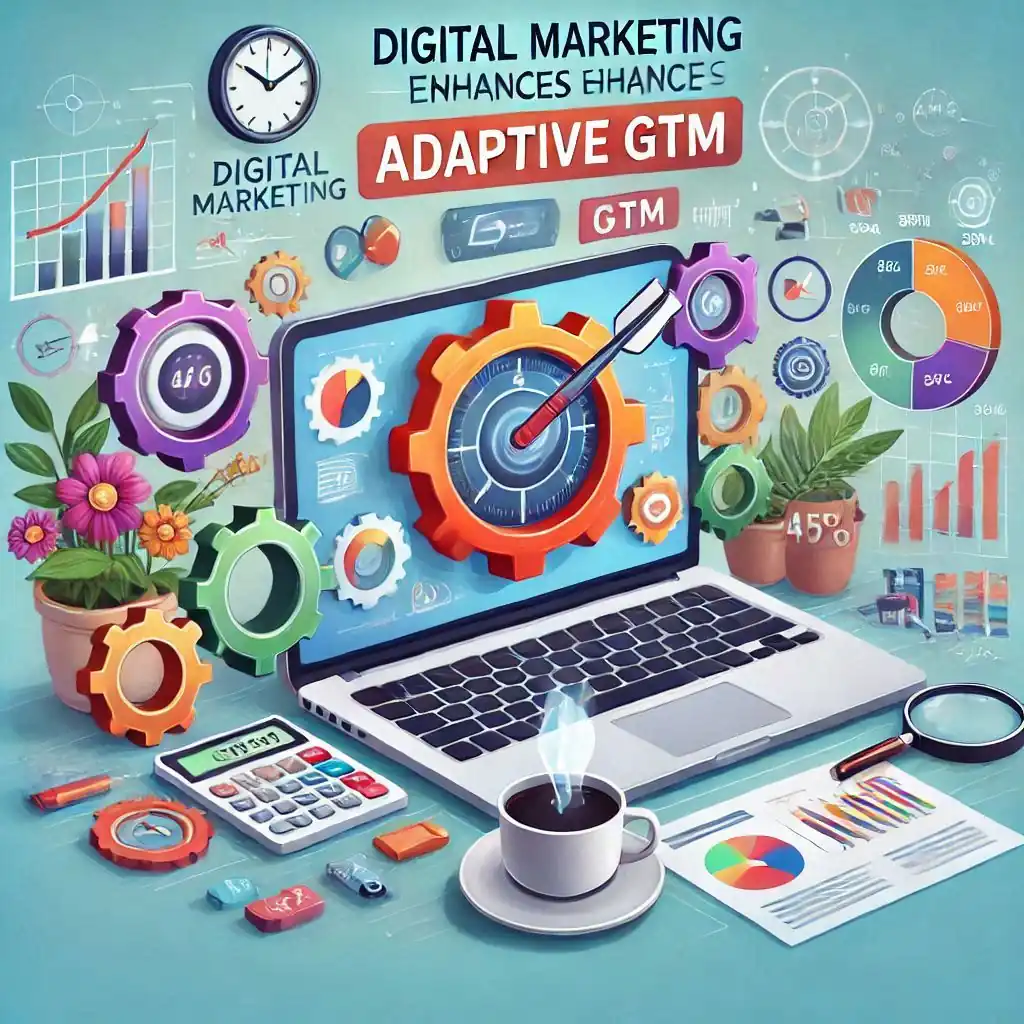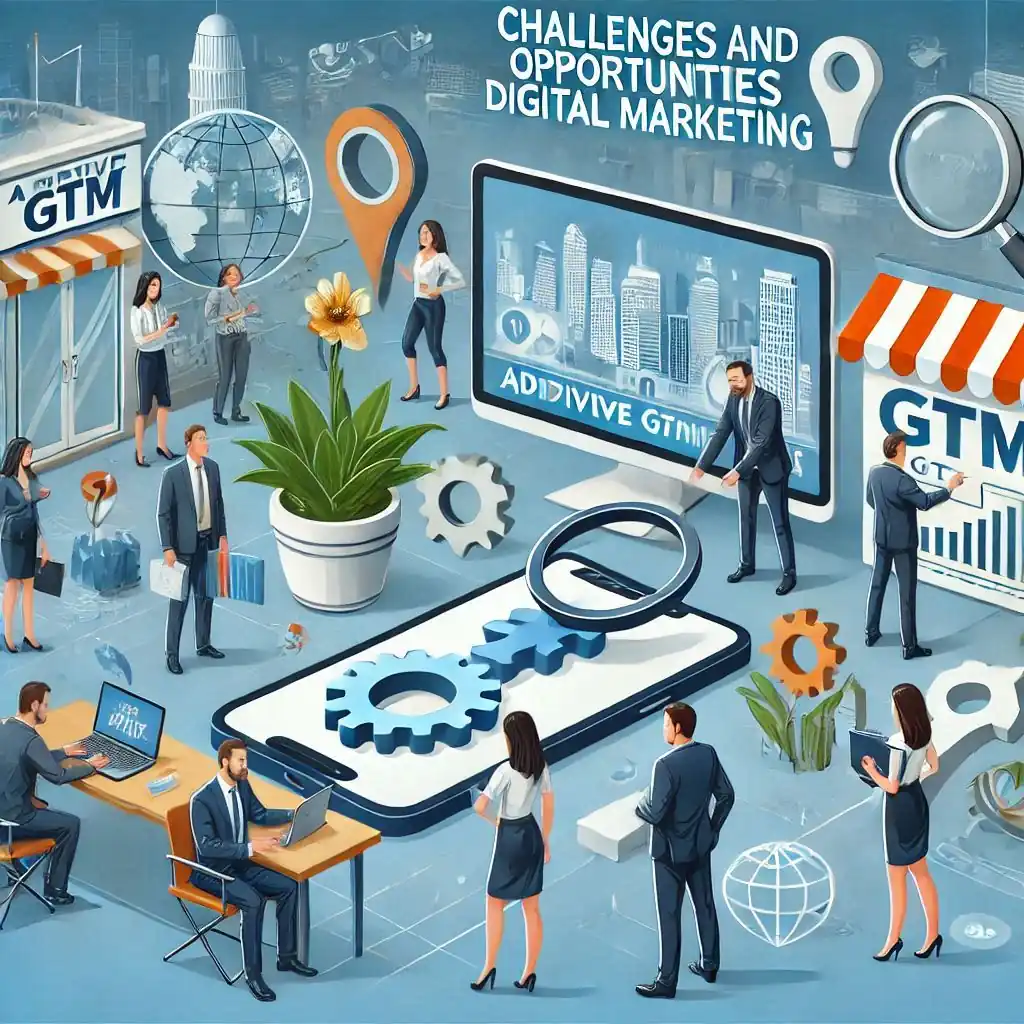The Future of B2B: Adaptive GTM
In today’s fast-changing world, B2B marketing is undergoing a major transformation. Companies are rethinking their go-to-market (GTM) strategies to keep up with the dynamic needs of buyers. As a digital marketer in Kannur, I’ve seen how businesses are embracing innovative approaches to stay competitive and relevant in this digital-first era.

What is Adaptive GTM?
An adaptive GTM strategy is all about flexibility and being customer-focused. It’s a way for companies to align their sales, marketing, and customer support teams to respond quickly to changes in the market. Unlike traditional GTM strategies, which stick to rigid plans, adaptive GTM thrives on real-time insights and agility.
This approach is particularly important in B2B, where buyers are increasingly influenced by digital channels and expect personalized, seamless experiences.
Why is Adaptive GTM Gaining Traction?
Several trends are behind the shift toward adaptive GTM strategies:
- The Power of Data
Data forms the backbone of adaptive GTM. With so many tools available today, business can dig deep into what customers do, like and dislike, and what keeps them up at night. Using this data, a company can:
- Tailor marketing campaigns.
- Anticipate customer needs and offer proactive solutions.
- Adjust sales strategy to boost success rates.
As a digital marketer in Kannur, I am always utilizing analytics to understand trends and fine-tune strategies so that our efforts resonate with the audience.
- Game-Changing Technology
Artificial intelligence (AI), machine learning, and automation are revolutionizing B2B marketing. These tools enable businesses to:
- Automate routine tasks, allowing for more time to be devoted to creative work.
- Personalize content for various segments of the audience.
- Analyze huge datasets and make smarter decisions.
- Changing Buyer Expectations
Today’s B2B buyers expect a level of convenience and personalization that matches their consumer experiences. Here are some things they enjoy:
- Easy, self-service options.
- Content that speaks directly to their challenges.
- Smooth transitions between digital and offline interactions.
Adaptive GTM focuses on creating a hassle-free buyer journey that creates seamless experiences. Steps toward Building an Adaptive GTM Strategy
If you have an interest in building an adaptive GTM strategy, then focus on these key areas:

- Team Collaboration
The sales, marketing, and customer success teams need to be brought together. Once these teams are working hand in hand, they convey a consistent message and develop a cohesive experience for the customers.
- Real-Time Insights
You need to be monitoring your strategy in real time. Tools such as CRM systems and marketing automation platforms give you valuable information that helps you adjust quickly.
For instance, when a campaign is not working as expected, you identify this early and can pivot instead of wasting your resources.
- Be Agile
Be open-minded in an adaptive GTM strategy. Try to learn from mistakes, adapt and refine your approach based on trends. This allows flexibility, innovation, and keeping up with the curve ahead.
- Customer-centric thinking
Your customers should be the heart of your strategy. You will be able to deliver value every step of the way by understanding what they need and what hurts them.
Being a digital marketer in Kannur, I have found that understanding the local preferences and cultural nuances can really boost engagement and build trust.
How Digital Marketing Enhances Adaptive GTM
Digital marketing has a big role to play in making adaptive GTM work. Here’s how it does it:
- Engaging Content
Create good, relevant content to help you reach B2B buyers. Blogs, case studies, videos, and whitepapers can be a source for specific problems and your ability to deal with them.
- SEO for Visibility
Making your website SEO-friendly makes it easy for potential clients to find you. The use of local keywords such as “digital marketer in Kannur” can be helpful for businesses to come out on top of regional markets.
- Social Media Connections
Platforms such as LinkedIn and Twitter are excellent for interacting with decision-makers, providing insights, and building the authority of your brand.
- Targeted Advertising
Using PPC campaigns and retargeting ads will bring the right audience to your website and more qualified leads.

Challenges and Opportunities
Adaptive GTM provides many benefits, but there are challenges as well:
Challenges:
- Integration of many technologies and tools.
- Aligning teams and making them work together seamlessly.
- Managing constant adaptation costs.
Opportunities:
- Staying ahead of the competition by being innovative.
- Building stronger customer relationships through personalized experiences.
- Increasing market share by responding to the changing needs of buyers.
Conclusion
The future of B2B marketing is in adaptive GTM strategies. Keeping agile, leveraging the latest technologies, and keeping the customer at the center will make businesses thrive in an ever-changing market.
Being a digital marketer in Kannur, the possibilities that adaptive GTM brings are inspiring. Small startups or large enterprises-it is the time to think differently and embrace this exciting new era of B2B marketing.
